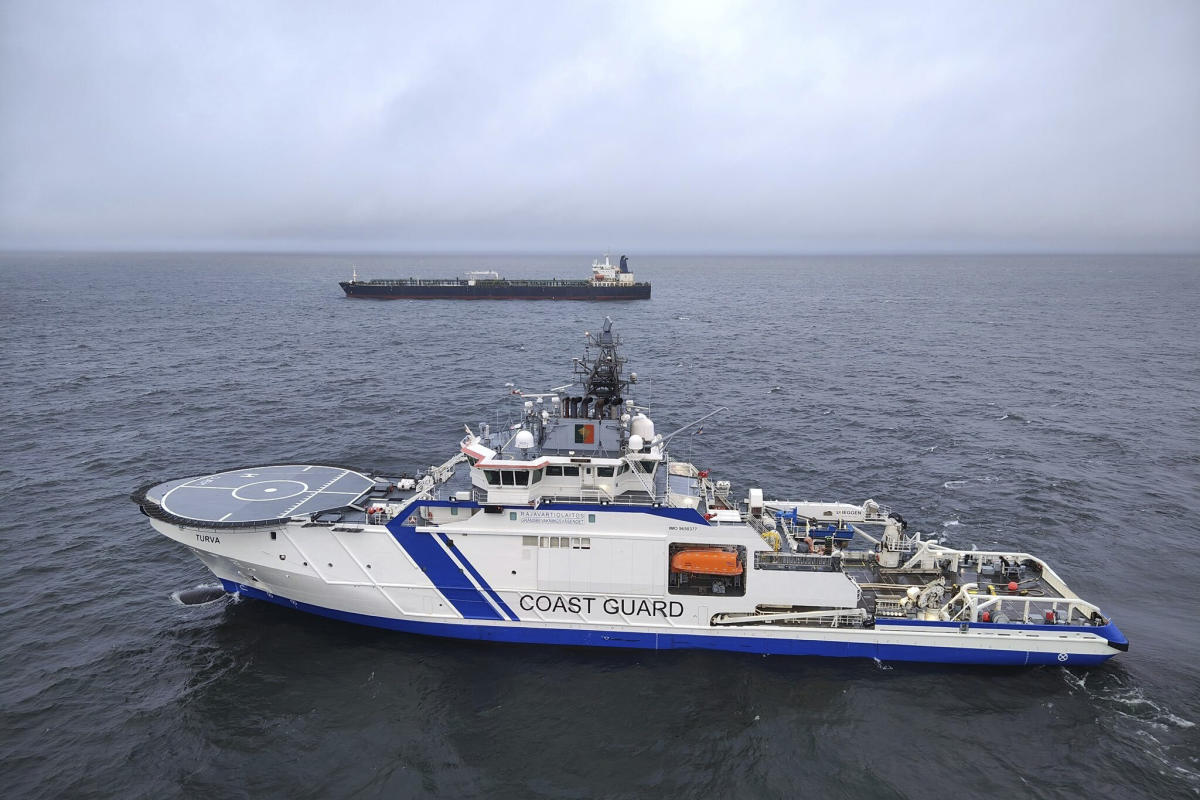HELSINKI, Finland (AP) — Finnish investigators probing the damage to a Baltic Sea power cable and several data cables said they found an anchor drag mark on the seabed, apparently from a Russia-linked vessel that has already been seized for investigation.
The Estlink-2 power cable, which transmits energy from Finland to Estonia across the Baltic Sea, went down on Dec. 25 after an evident rupture. It had little impact on services but followed earlier damage to two data cables and the Nord Stream gas pipelines, both of which have been termed sabotage.
Finnish police chief investigator, Sami Paila, said late Sunday the trail dragged for “dozens of kilometers (miles) … if not almost a hundred kilometers (62 miles).”
Trusted news and daily delights, right in your inbox
See for yourself — The Yodel is the go-to source for daily news, entertainment and feel-good stories.
“Our current understanding is that the drag mark in question is that of the anchor of the Eagle S vessel. We have been able to clarify this matter through underwater research,” Paila told Finnish national TV broadcaster Yle.
“I can say that we have a preliminary understanding of what happened at sea, how the anchor mark was created there,” Paila said, without providing further details. He also stressed that the “question of intent is a completely essential issue to be clarified in the preliminary investigation, and it will be clarified as the investigation progresses.”
On Saturday, the vessel was escorted to inner anchorage in the vicinity of the port of Porvoo, to facilitate the investigation, officials said. It is being probed under criminal charges of aggravated interference with telecommunications, aggravated vandalism and aggravated regulatory offense.
The vessel is flagged in the Cook Islands but was described by Finnish customs officials and the European Union’s executive commission as part of Russia’s shadow fleet of fuel tankers. Those are aging vessels with obscure ownership, acquired to evade Western sanctions on Russia amid the war in Ukraine and operating without Western-regulated insurance.
Russia’s use of the vessels has raised environmental concerns about accidents given their age and uncertain insurance coverage.
In the wake of the cable rupture, NATO Secretary-General Mark Rutte said last week that the military alliance, which Finland joined last year, will step up patrols in the Baltic Sea region
Finland, which shares a 1,340-kilometer (832-mile) border with Russia, abandoned its decades-long policy of neutrality and joined NATO in 2023, amid Russia’s war against Ukraine.

